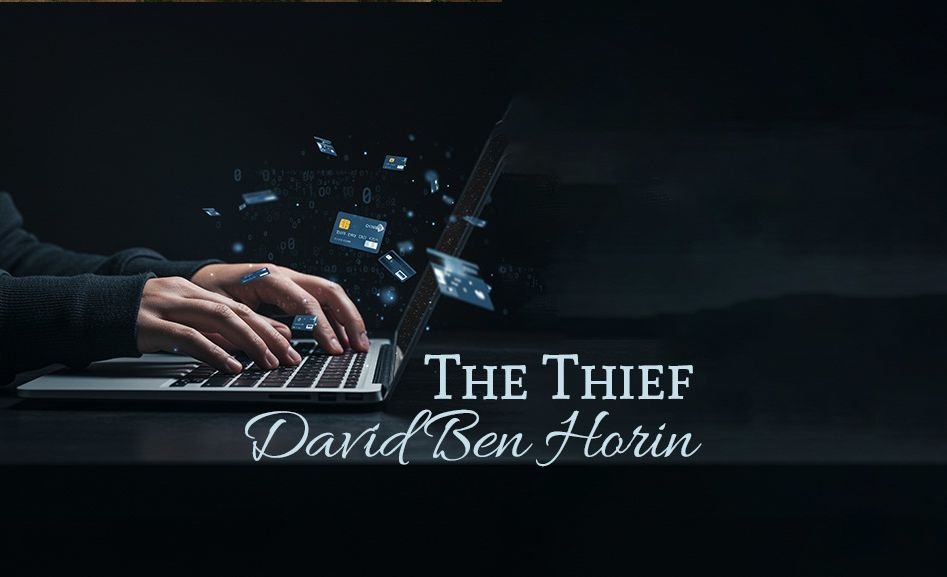
Fight! Fight! Fight!
Never give up in your struggle to find success in serving Hashem! Encourage yourself and keep trying. Eventually, you'll grow to new heights.

“Flee for your life, do not look behind you, and do not stand in the entire plain. Flee to the mountain, lest you perish.” (Bereishit19:17)
Focus on the Task at Hand
Pirkei Avot (Chapter 4, Mishnah 1) taught us: Who is wise? One who learns from every man. The Baal Shem Tov explained that you can learn something from literally anyone, even a non-Jew. A yid can utilize that wisdom he learns from others for spiritual growth.
The Maggid of Mezritch taught R’ Zusha from Anapoli, that there are seven qualities of a thief that a yid can apply towards their Avodat Hashem. One of those lessons is a thief’s persistence. If he fails on the first night, he will try again the next night.
This, explained the Maggid, provides a powerful lesson for our Avodat Hashem. A yid cannot give up, they must not despair, when they struggle to find success in Avodat Hashem. They need to remember that there are inevitable ups and downs, times of success and times of struggle. And it is critical for a yid to encourage himself to persistently and continuously keep striving for growth.
Don’t Remain Stuck in the Mud
A yid once met with R’ Avraham from Slonim and, with a broken heart, told him that no matter how hard he tries, he is unable to serve Hashem properly. He expressed that he feels like he is stuck in the mud and as soon as he gets one foot free the other gets stuck.
The Rebbe responded, “You might very well be stuck in the mud. However, if you just sit there, you certainly will never get out. If you keep walking, eventually you will free yourself.”
The pasuk says in Tehillim (103:5) “Your youth renews itself like the eagle.” R’ Levi from Berdichev explained that an eagle might lose a feather once and awhile. However, it immediately starts growing back. So too, when a yid is in a low spiritual state and he cannot see how he will be able to grow in his Avodat Hashem, he mustn’t lose hope. Rather, he must believe that he can regain his strength and grow to new heights.
Find the Gems
R’ Simchah Bunim from Pershischa said, that there are two very different approaches for searching for precious stones. A person who searches in a place that is questionable, if they do not find precious stones immediately, they will continue looking, however, they will eventually move on. On the other hand, if a person is looking in a location that is well-known to have precious stones, they do not give up until they find them.
This, explained R’ Bunim, is reflected by in the pasuk (Mishlei 2:4-5), “if you seek it like silver, and hunt for it like treasures, then you will understand the fear of the Lord”. The Midrash Tanchuma (Vayeishev ) expounded this pasuk by offering an analogy of someone who lost a precious stone. What do they do? He would look into every crack and uncover every stone until he found his lost gem.
Everyone knows that the Torah and mitzvot are like “buried gems” that are hidden wherever a person stands. He cannot despair or lose hope if he cannot find them immediately. If he searches with all of his strength, he will unquestionably find all of the strength to perform and observe all of the mitzvot.
Not Just About Doing Good
A yid cannot lose hope even if he has succumbed to even the most severe transgressions. He cannot allow himself to think that he is forsaken.
The Bas Ayin taught: “Hashem is close to a yid even after he has committed serious transgression, as it says (Vayikra 16:16), ‘which dwells with them amidst their defilements’. If a yid doesn’t believe in this, he is a heretic”.
Similarly, R’ Moshe from Kobrin said, “If a yid cannot daven before their Father in Heaven after he has transgressed the most serious of transgressions, like a sinful son before his father, then he hasn’t even entered the threshold of Yiddishkeit.”
A Wrestling Match
A person who struggles to defeat his Yetzer Harah, even if has failed multiple times, he is nevertheless called a “tzaddik.” As it says (Mishlei 24:16), “For a righteous man can fall seven times and rise”. A tzaddik falls many times. However, each time, he fights to overcome his Yetzer Harah and rise anew. Therefore, he remains a tzaddik.
The Seforim compare this battle to a wrestling match between two men. At any given moment, one is overpowering the other. They are both taking blows and getting bloodied. However, the one who gets up last and walks away is the winner. He receives awards and distinction even though he is also bloodied and wounded.
The battle with the Yetzer Harah is the same. There are times when the Yetzer Harah has the upper hand and is delivering blow after blow. However, if, in the end, if you are the one who gets up, you are the victor and there is an unimaginable reward waiting for you in Olam HaBah (the next world).
R’ Mordechai from Lechovitzh said, “In the battle with the Yetzer Harah, you will both deliver and take some hits. The only thing that matters is that you deliver the final blow.”
“Flee to the Mountain”
This Is the message that the Angel provides to Lot, when he was leading him out of Sodom, on condition that he repents and purifies himself from their wicked ways.
He begins, “Flee for your life…” The Angel was telling him to flee from Sodom’s influence. And “do not look behind you”, don’t think about your past transgressions.
The pasuk continues, “and do not stand in the entire plain”, meaning do not ponder these transgressions because they would cause despair and despondency.
Rather, “Flee to the mountain” – focus on investing all of your energy and strength into growing in your Avodat Hashem.
***
The Kalever Rebbe is the seventh Rebbe of the Kaalov Chasidic dynasty, begun by his ancestor who was born to his previously childless parents after receiving a blessing from the Baal Shem Tov zy”a, and later learned under the Maggid of Mezeritch zt”l. The Rebbe has been involved in outreach for more than 30 years and writes weekly emails on understanding current issues through the Torah. Sign up at www.kaalov.org.












Tell us what you think!
Thank you for your comment!
It will be published after approval by the Editor.